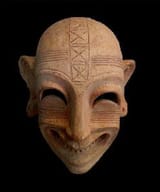>>512039958 (OP)
"These Canaanite gods were the same as those of Phoenicia, whose altars the bold sailors of Tyre and Sidon established wherever they penetrated, that is, not only in Carthage, but along the entire Mediterranean coast, on the western and northern coasts of Europe, on the western coast of Africa, and as far as the Red Sea.
There was Moloch, the bull-god (elsewhere honored under the names of Melkarth and Baal), with his gigantic molten statue, hollow and red-hot, into which human victims were thrown; Moloch, of whom the golden calf was only the emblematic figure, and who demanded from his faithful the most painful sacrifice: that of their firstborn child.
There was also Astarte, the goddess of lust, with her colleges of sacred courtesans, with her obligatory prostitution of all women, at certain festivals of the year. In the aftermath of the conquest, as when they were masters of the land, under their Judges as under their Kings, the Hebrews devoted themselves in large numbers to the worship of Moloch and Astarte, erected "high places" for them and made their children "pass through the fire." The Prophets never cease to reproach them for these human sacrifices which, even today, have not so disappeared among the Jews that one cannot find some trace of them in the practice of "ritual crime."
This atrocious cult has left traces even in our language. When the Romans settled in Sardinia, which had long been a Phoenician possession, they found it covered with burning statues erected to Moloch. The screams and wails of the human victims thrown into the terrifying machine merged, outside, into a kind of terrifying sneer, which the Romans called the "Sardinian laughter" or "sardonic." We still use the word without thinking of the memories it evokes."




